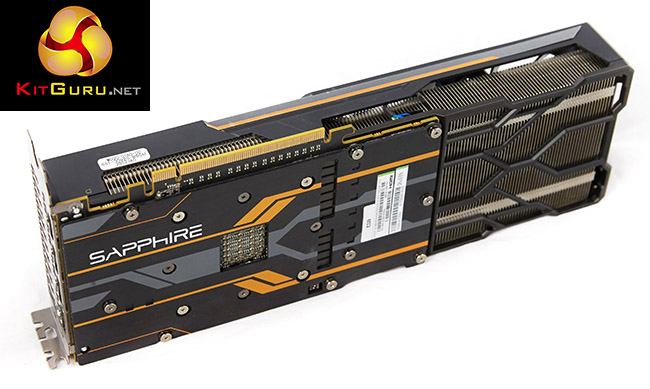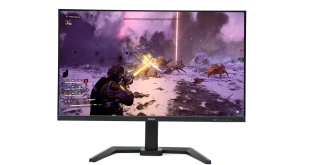I tested the Fury X card earlier this month and while impressed with various aspects of the new Fiji architecture I couldn't help but feel a little disappointed that it wasn't able to compete in a head to head against the GTX980Ti. There was no doubt that AMD's new solution could deliver great results at Ultra HD 4K resolutions, but the enhanced GTX980 Ti partner cards were clearly the superior solution at much the same price.
We await another look at the 2nd revision of the Fury X in the coming weeks, because our overall analysis was negatively impacted by excessive pump noise and intrusive coil whine issues. The updated version of the card should be hitting etailers very soon, although UK stores don't seem to be listing a ‘Fury X – Rev 2' on their pre-order pages. Our own Fury X came from the American retail channel after launch and it was a Rev 1 card, therefore we advise you check with the store before placing an order.
Many of our readers have been waiting on the air cooled Fury cards to become available and our analysis of the latest Fiji based Sapphire Tri-X Radeon R9 Fury paints a very positive picture indeed.

Sapphire have ditched the enclosed ‘all in one liquid cooler' and outfitted this Fury model with the latest revision of their Tri-X air cooler. Our analysis has shown it is a class leading solution, equipped with three low noise Aerofoil fans that spin down completely when the card is running an idle or low load state. There is an advanced fan control system to set temperature by arbitrating multiple sensors – the end result is that the three 90mm fans actually never spin that fast, regardless of the load.
Sapphire have fitted the card with a backplate and an extension to the cooler assembly to increase air circulation. A solid copper transfer plate is fitted alongside a multi heatpipe array featuring a single 10mm, two 8mm and four 6 mm heatpipes.
Performance from the Fury card is certainly not lacking, especially at Ultra HD 4K resolutions. The direct comparison against the Asus GTX980 Strix (£420 at Amazon HERE) shows the Fury card winning all of the time at 3,840×2,160, and losing out only a couple of times in some game engines at 1440p. The high bandwidth nature of Fiji means it does tend to really shine when gaming at 4K.
With all the hype and AMD's marketing focus about Fiji architecture and prowess at 4K resolutions – why still use HDMI 1.4a and not HDMI 2.0 ports? Gamers who own an HDMI equipped 4K television set are limited to 30hz at the native 4K resolution. I just bought a new 55 inch Sony 4K TV with full Amazon Prime and Netflix support for 4K streaming – yet if I use AMD's latest Fury hardware, my refresh rate is limited to 30hz at 4K – no one wants to play games with a 30hz limitation. Of course this isn't a problem if you use a monitor with Displayport but based on research and what I have read on our own Facebook page, this lack of HDMI 2.0 connectivity is a real bugbear for gamers.
The AMD Fury is clearly designed to target and outperform the GTX980, and we intentionally selected an (almost) equally priced Asus GTX980 Strix for the comparison today. The problem for AMD is that Nvidia partners such as Palit have dropped their prices recently, and their Jetstream model is available for only £379.99 inc vat. The overclocked enhanced Palit model is only £10 more, at £389.99 inc vat. The excellent Gigabyte GTX980 Windforce model is also now £389.99 inc vat. How much for Fury?
We have been told that AMD Fury pricing will start around £420 and more expensive enhanced models such as this overclocked Tri-X model will be priced up to £450 inc vat. Retail pricing can drop in the weeks after a new product launch, so perhaps AMD will work with partners and etailers to drop their prices a little more.
Fury is definitely a stronger launch than Fury X. Fury pricing seems to be between £80 and £180 less (£420-£450 compared to £529.99-£599.99) and there are no coil whine or pump issues to discuss today. This Tri-X cooler is the companies best cooler yet and reinforces Sapphire's long history of producing the finest coolers for AMD cards.

Stock is due to land at Overclockers UK soon – check this page for updated Fury pricing information soon.
Sapphire are giving away one of these cards today via SAPPHIRE NATION. Head to THIS page today for more information.
Discuss on our Facebook page, over HERE.
Pros:
- quieter than the liquid cooled (Rev 1) Fury X sample we tested.
- fitted with high grade backplate.
- high grade fans and clever profile implementation produce little noise, even under load.
- outperforms the GTX980 at Ultra HD 4K, often by a clear margin.
- doesn't get too hot under load.
- when overclocked to 1,100mhz it isn't too far behind reference clocked Fury X.
- Sapphire's dual bios configuration with enhanced power delivery is a welcome addition.
Cons:
- Price point could be more aggressive.
- No HDMI 2.0 support.
- core clock overclocking headroom is limited.
- no Catalyst Control Center option for memory overclocking at this stage.
Kitguru says: The Sapphire Tri-X Radeon R9 Fury is a fantastic graphics card. It is powerful enough to outperform the GTX980 and the high bandwidth architecture delivers a wonderful gaming experience at Ultra HD 4k. The latest iteration of the Tri-X cooler sets a new standard for AMD cooling solutions – it is silent when idle and very quiet under extended heavy load.

 KitGuru KitGuru.net – Tech News | Hardware News | Hardware Reviews | IOS | Mobile | Gaming | Graphics Cards
KitGuru KitGuru.net – Tech News | Hardware News | Hardware Reviews | IOS | Mobile | Gaming | Graphics Cards


